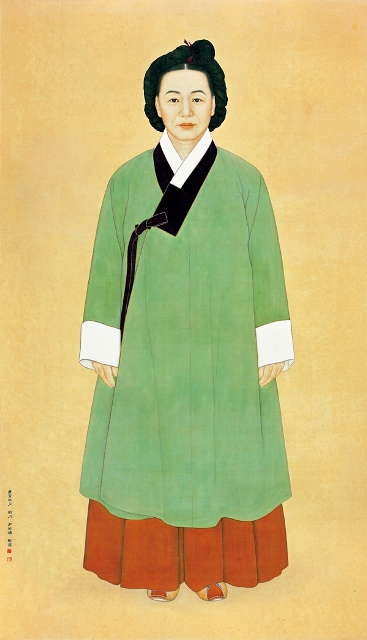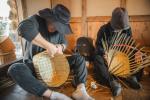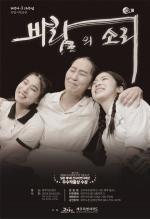 |
||
| National standard full-length portrait of the late Kim Man Deok. Photo from the leaflet of Mandeokgwan. Photo courtesy Mandeokgwan | ||
[Note: This is part one of a two-part article. For part two, see here.]
Kim Mandeok was a woman ahead of her time. Often referred to as "the first female 'CEO' of Korea," she embodied Jeju's mythological goddess Gamunjang-Agi in her self-determined fortune; further, in dispersing her wealth when the people of this island were in severe need, she demonstrated compassion in the form of philanthropy combined with pragmatism.
While it is important to understand her life within its historical and cultural context and can be difficult to separate legend from reality with limited historical record, her self-actualization as a precursor to her selfless charity provide themes both universal and timeless.
In order to understand the relevance of Kim Mandeok's 18th-century Jeju Island life to the 21st-century world, she must first be placed within historical and cultural context, for objectivity and in order to discover universal themes.
Kim Mandeok (1739-1812), by local custom referred to simply as "Mandeok," lived during Korea's Joseon Era, one of the world's most long-lasting dynasties which revitalized and relied strongly on Neo-Confucian methods of social governance that linger in Korea even today.
While this system was strongly predicated on gender roles repressive of women, it is significant to note that on Jeju Island, Confucian ideals were introduced much later than on the mainland and in many ways rejected, never achieving the same stronghold.
The local culture of the island, with a goddess-oriented, shamanistic indigenous religion at its foundation and a traditionally egalitarian, matrifocal culture based on agrarian and marine cultivation practices, had long provided women with greater economic and social independence than their mainland counterparts.
Nevertheless, or perhaps in part because of the laborious nature of their lives, a local proverb gave voice to the lament, "Better to be born a cow than a woman.”
A culmination of events in Mandeok's life provided her with a unique opportunity. First, she was the middle and only female of three children, offspring of an aristocratic (yangban) father in political exile from the mainland according to the custom of that time, and a local commoner (cheonmin) mother. According to the laws of the Joseon class system, the children of an "inter-class" union were considered members of the lower of the two parental classes; thus, Mandeok and her siblings would have been classified as cheonmin.
Orphaned at age 12 by the successive deaths of each parent, Mandeok was given for fostering to a retired courtesan (gisaeng), the owner of a gisaeng house who provided her with the profession's typically extensive education in the arts, medicine and handicraft. Jeju gisaeng in particular were also known for their equestrian skills.
Since the year 1650, gisaeng were considered the property of the government, and classed similarly to the slaves in Korea at that time, even though they were also among the most highly educated women. It was said that they "possessed the body of a commoner but the mind of an aristocrat." The class system was not abolished until 1895, at which time gisaeng and slaves alike were given their freedom.
Gisaeng houses were typically in the center of town and near the marketplace which, coupled with her apprenticeship to the gisaeng owner, would have provided Mandeok with a marked sense of business. Gisaeng were also known to have unparalleled access to government officials and knowledge of local affairs, often viewed as a key source of political or court intelligence and sometimes, though unofficially, even wielding political clout. Some were also able to attain considerable wealth.
It is woven into local legend that at age 22, Mandeok successfully petitioned to have her name removed from the gisaeng registry and “restored” to aristocracy. The royal record of 1796, however, in mentioning Mandeok's act of charity to her people and the king's acknowledgment of same, identifies her as "gisaeng." It must also be considered, as mentioned, that according to the laws of that time, the offspring of a yangban father and cheonmin mother would have been classified as cheonmin, or commoners, not as yangban, or aristocrats.
Women typically became gisaeng by age 15, the age of majority in Korea at the time, following at least 3 years of training; the custom was in fact to retire from gisaeng entertainment work by the age of 22, or at the latest by age 30, after which most women continued in the medical or needlework aspects of their profession.
In order for a woman to have her name removed from the gisaeng registry, she essentially had to "buy" her freedom with a large monetary contribution to government officials, typically done indirectly through a male patron and after which many gravitated to tavern work or inn-keeping.
Mandeok soon owned an inn for merchants and a commission agency for port trade, among the earliest to do so. By utilizing her extensive government network and powerful connections, taking advantage of varying tax laws, and gaining a monopoly on imported rice and salt exchanged for Jeju seaweed and abalone, she amassed great wealth and by the age of 50 was considered one of the two wealthiest women in Korea.
Like Gamunjang-Agi, the goddess of fortune in Jeju Island's traditional mythology who at an early age saw within herself the key to her own fate, Mandeok recognized her self-worth and ability and ultimately found a way to achieve her full potential.
–
Dr. Hilty is a cultural health psychologist from New York who now makes Jeju Island her home. The above represents a presentation she gave at the 2012 Jeju Forum for Peace and Prosperity.
Anne Hilty eastwest.psyche@gmail.com






